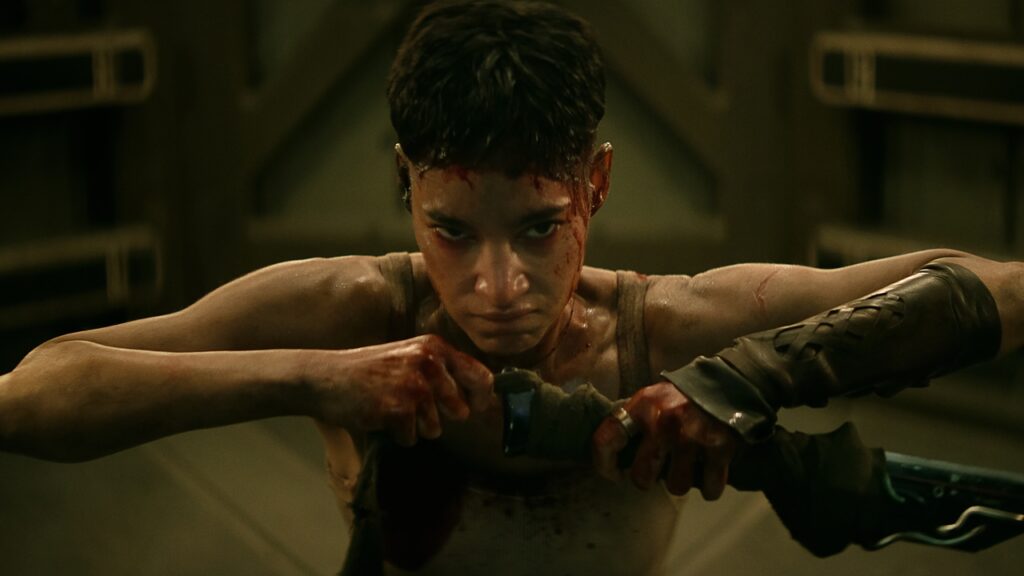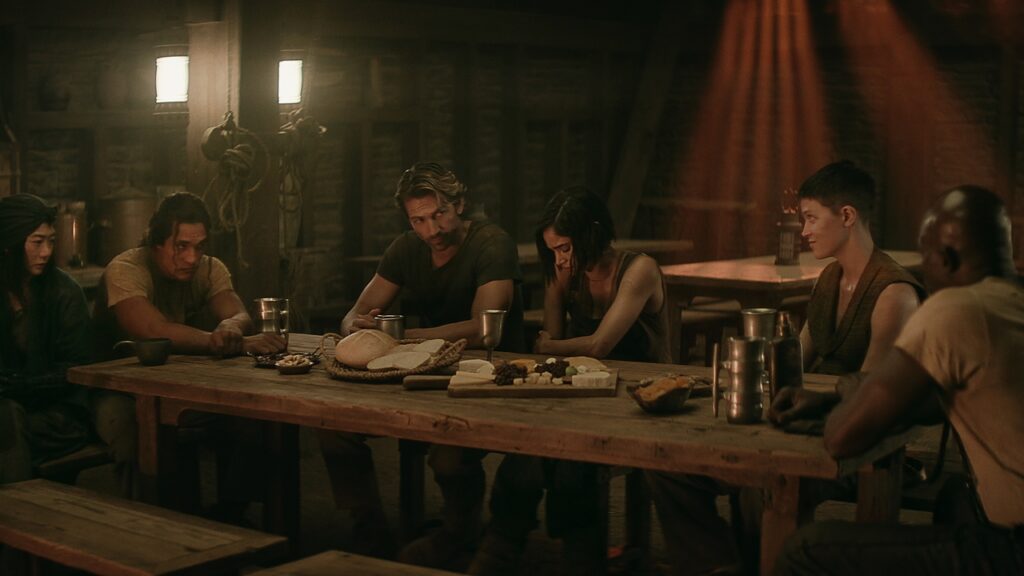Read also:
How to Watch FX Live Without CableHow To Watch AMC Without CableHow to Watch ABC Without CableHow to Watch Paramount Network Without CableMy favorite moments in Rebel Moon: Part Two – The Scargiver come during quick breaths before a plunge.
In the first, warriors Tarak (Staz Nair) and Milius (Elise Duffy) come to terms with their likely imminent deaths at the hands of a smoke-spewing tank. Having spent years of his life consumed by survivor’s guilt, Tarak thought having a cause to die for would be enough. It isn’t. He wants to live, but he probably won’t. The next best thing is to die fighting alongside a peer like Milius.
In the second, Kora (Sofia Boutella) is in the midst of blasting her way through the fearsome dreadnought King’s Gaze. After slaying a warrior wielding a high-tech superheated sword, she takes a moment to catch her breath. With some pilfered cloth, she wraps the blade’s hilt so she can use it without burning herself. It’s a moment of improvisation, providing Boutella a chance to deliver a quieter piece of physical acting that stands in contrast to brawling with a corridor of goons or swordfighting Ed Skrein’s Admiral Noble.

Both moments are quick, comparatively quiet, and, above all, human. They ground The Scargiver, spreading its tactility beyond its action and making its personal stakes land. At its best, director Zack Snyder’s science fantasy feels like an exciting Seven Samurai riff, steadily escalating its action’s scale without losing itself in the noise. The heroes are likable, and Skrein’s snarling turn is a genuine delight. While mostly familiar—echoes of Warhammer 40,000‘s grimly dark far future, for instance—the film boasts a well-rendered aesthetic. When something unfamiliar does pop up, like a hooded string orchestra forced to perform at an Ides-of-March-style calamity, it’s striking.
At its weakest, The Scargiver gets caught up in dispensing capital-L Lore without letting it breathe or become real. It treats the mythology’s existence as inherently significant, frequently interrupting the primary story with lengthy, often monotone flashbacks. The most frustrating one combines a genuinely neat image—the hooded orchestra—with bizarrely halting staging and delivery. It’s as though it was written for the stage and transplanted to the screen without consideration of the mediums’ differences. The result is that a pivotal moment in Kora’s life does not land. Instead, a neat bit of design lingers longer in the memory than the entire upheaval of the lead’s life.

Whenever The Scargiver‘s storytelling aims for the capital G-Grand Space Opera, it falters. Consider Mordred’s final clash with Arthur in Excalibur for the fate of Britain in comparison. It isn’t exciting because Britain’s present and future is on the line. It’s because it pits a flawed but good man who never got to be human against the rotten-hearted son fueled by endless hatred groomed into him by his mother/aunt. They’re compelling characters whose inner lives Excalibur has brought to life.
Humanity makes the grand grand. Without it, it’s just so much gesturing. When The Scargiver breathes and focuses on what’s happening on screen rather than in the larger Rebel Moon world, it works. That’s what makes its insistence on meaning and worldcraft so disappointing.
Skrein blends Noble’s obsessive desire for revenge on Kora with imperial callousness to create a fun monster. He is so sure of himself that his subordinates obey him as much for his confidence as to avoid his cruelty. Kora’s driven to stop him even if she may not hate him like an archnemesis. He’s a threat to the community she loves, and for that, she must kill him (again). It’s a strong rivalry, ensuring their eventual duel anchors the final battle well.

Indeed, the bizarre staginess of Kora’s pivotal flashback aside, The Scargiver‘s action is quite good. Snyder uses the big battle’s scope and scale to his advantage, carving out space for Doona Bae to go toe-to-toe with a squad of sword-wielding supercommandoes while defending folks who cannot fight and space for Djimon Hounsou to lead a makeshift army in a defensive action against an overconfident gaggle of goons who wise up fast. No one wins easily here. The fights come down to fingernails and luck. It’s consistently enjoyable and varied—impressive, given the sequence’s length.
For all that Rebel Moon: Part Two—The Scargiver does well, it still gets caught up in itself far too often. There’s a hollowness to its worldcraft that actively sabotages several of its key dramatic moments, leaving it never better than fine. If you’re on Netflix and have a hankering for Zack Snyder, I’d say Army of the Dead is the way to go.
Rebel Moon: Part Two – The Scargiver stands against the fiendish Admiral Noble now on Netflix.